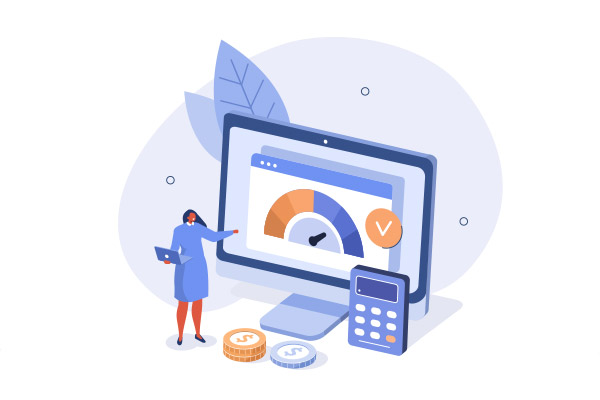In 2025, personal loans remain one of the most versatile credit tools available in the U.S., often used for debt consolidation, emergencies, renovations, or major purchases. With total balances reaching $253 billion across 24.6 million American households as of Q1 2025, usage continues to rise—averaging around $11,630 per borrower This article explores when a personal loan makes financial sense, what to watch out for, and how to manage one smartly.
A personal loan is usually an unsecured installment loan, meaning no collateral is required, and borrowers repay with fixed monthly payments over a set term (usually 2–7 years).
Pros:
- Fixed, predictable payments and interest rates
- Typically lower APRs than credit cards—average between 12.6–20.8%, compared to ~20% for cards
- Fast processing—sometimes same-day funding
Cons:
- Interest rates can still be high, especially for lower credit scores
- Harder to refinance after taking one out
- Bad behavior (e.g. missed payments) can hurt your credit quickly
As Bankrate notes, “Personal loans often come with lower interest rates than credit cards. As of July 2025, the average personal loan rate is 12.64% while the average credit card rate is 20.13%”
One of the most common—and smartest—uses. If you carry credit-card debt at ~20–25% APR, moving that balance into a personal loan at ~12% saves money and simplifies payments. As CBS News explains, consolidation reduces interest costs and brings structure to repayment planning
Unexpected expenses—car repairs, medical bills, home repairs—can often be covered faster with a personal loan than with a HELOC or credit card. Motley Fool notes it’s ideal for urgent needs like emergencies or big one-time costs .
Loans under about $25k at single-digit APRs (from top lenders like LightStream or Reach Financial at 5.99–6.49%) can be a good option for significant purchases such as weddings or RVs
If managed well, personal loans can improve credit mix and reduce credit utilization. Investopedia notes they can help raise scores when used thoughtfully
Average APRs are ~20.78% and can exceed 99% for those with fair/poor credit If your rate is near or above your current debts, a personal loan may not help.
Rolling debts into a new loan without changing spending habits can exacerbate debt. As CBS warns, without addressing behavior, consolidation can deepen the problem
For large, long-term expenses (e.g., major renovations), secured options like HELOCs may offer lower rates—even after fees
- Average Personal Loan APR: ~12.64% (for 700 FICO score)
- Lowest Tier: Top-tier borrowers can see rates below 6.5% .
- Overall Range: 5.99% (best) to 99.99% for risky borrowers
While Fed policy holds short-term rates steady, broader economic uncertainty keeps personal loan rates relatively high
Know why you need the loan—whether debt consolidation, emergency, purchase, or credit building. A defined purpose guards against aimless borrowing
Compare APRs, terms, and fees across banks, credit unions, and online lenders. Fintech players and AI-driven underwriting now offer better access—even to those with thin credit histories .
Higher credit scores (700+) earn better offers. Use platforms that let you pre-qualify without affecting your credit score .
Watch for origination and late-payment fees. Ensure you’re allowed early repayment without penalties—fees can erode savings from consolidation.
Shorter terms lower interest costs but mean higher monthly payments. Align the term with your budget and risk tolerance.
Set up automatic payments to avoid missed payments that damage credit and add costs.
- 0% Intro APR Credit Cards: Good for short-term financing; require disciplined repayment
- HELOC / Home Equity Loans: Lower interest for larger, long-term borrowing—but risk your home as collateral.
- Salary/Family Loans: High risk to personal relationships; treat as last resort .
- Buy-Now-Pay-Later (BNPL): Convenient for small purchases, but can encourage overspending and may affect credit scores
Use budgeting tools to monitor loan balance, interest, and payoff timeline. Treat personal debt as finite, not renewable credit.
Avoid refilling credit-card debts once cleared. Resist emotional relapse into old habits.
If your credit improves or market conditions shift significantly, refinancing your loan might reduce costs further.
Paid and managed responsibly, personal loans can strengthen your credit profile and prepare you for future goals like a mortgage.
- Fintech & AI Underwriting: Expanded access for consumers with thin credit and improved default risk assessment
- Greater Digital Access & Speed: Transactions processed online in hours or minutes, with streamlined onboarding.
- Increased Risk Management: Lenders use real-time AI to detect fraud and balance inclusion with risk mitigation.
- Emerging Credit Tools: BNPL is rising fast, with awareness that it carries debt pitfalls .
- Financial Inclusion Push: Credit unions and community lenders are using alternative data to expand loan access responsibly .
Consider Samantha, a 32‑year‑old marketing manager:
- Situation: $15,000 in credit-card debt at 22–24% APR
- Action: Qualifies for a 5-year personal loan at 11%
- Results:
- Interest savings: ~$3,600 over life of loan
- Simplified payments: one monthly fixed payment
- Credit score boost: Improved mix and timely payments
This is a typical scenario where a personal loan drives financial improvement.
- Delinquency: Q1 2025 personal loan delinquency was ~3.49%, higher than mortgages or auto loans
- Spending Trap: Rolling into loans without addressing spending habits worsens debt cycles.
- Hidden Fees: Origination and prepayment penalties can impact savings.
- Variable Market Conditions: Upcoming economic shifts could affect interest rates, especially for future refinancing.
Personal loans in 2025 are a powerful, flexible financial tool—but only when used wisely. They work best for:
- Consolidating high-interest debt
- Covering emergencies or one-time expenses
- Making intentional, medium-sized purchases
- Building credit responsibly
They don’t make sense if used to fund ongoing lifestyle inflation or if the borrower lacks creditworthiness. To use them wisely:
- Define your purpose
- Shop for optimal rates and terms
- Plan repayment strategically
- Avoid repeat borrowing for avoidable expenses

